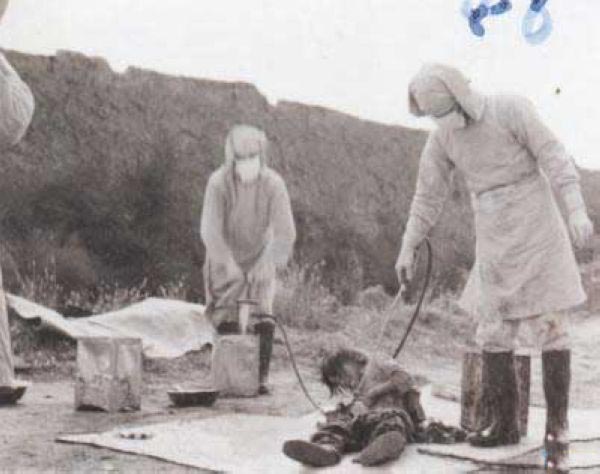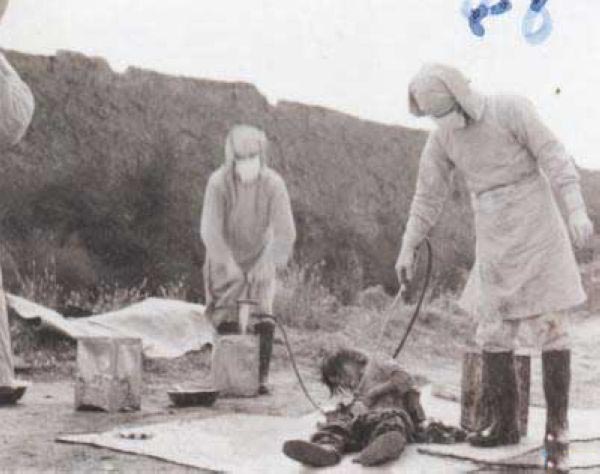The Nazi are not the only culprits who performed live human experiments and experimented with biological warfare during World War Two. Lately more and more elderly Japanese veterans have been coming forward with stories and memories of Unit 731, the Japanese regiment responsible during the war for thousands of experiments conducted on Chinese civilians, as well as on Soviet and US prisoners of war.
Unit 731 was led by Dr Shiro Ishii, who sanctioned thousands of tests and experiments with the ultimate aim of finding biological and chemical weapons that could be used against the Chinese. The unit was based in a complex of laboratories, operating theatres and crematoria funded by the Japanese government.
The experiments included the testing of diseases on living persons, examining the body’s processes prior to decomposition, and performing open surgery to remove internal organs and test various theories on them. The staff at the complex also infected subjects with diseases such as syphilis and the plague, and tested how live human bodies reacted to being frozen.
The unit also supported Japanese military strategy and tactics by conspiring with them on carrying out biological raids over China. One such example is the air-drop over southern China of a rice and wheat mixture carrying plague-infected fleas, which killed hundreds of thousands of civilians. Researchers have found that the Japanese even intended to attack the US with biological weapons. One plan was to have a kamikaze pilot crash his aircraft, which was carrying the plague, on the US mainland, the io9.com reports.
Once it was clear that the Japanese would have to surrender in 1945, Dr Ishii ordered the immediate destruction of as much of Unit 731 as possible. Dr Ishii and few of the unit’s scientists and staff were put on trial for war crimes. It is said that US General MacArthur had made an agreement with the Japanese to share their findings of the Unit 731 investigation with US authorities, who would ensure them immunity from prosecution. Only around 30 members of Unit 731 were put on trial — five were sentenced to be executed and the rest were put on parole. Dr Ishii avoided sentencing and worked for the US government in weapons research.
Lately more and more veterans of Unit 731 are coming forward to tell their stories of such war time experiments. Some speak of live experiments on young Philippine women to investigate female anatomy. The Japanese thought the women were Allied spies, and so they believed the experiments were acceptable. One nurse saw human remains being eaten by dogs, while another staff member remembers the human body of a Westerner cut in two and preserved from head to toe in formaldehyde.
Mass graves have gradually been uncovered since the end of World War Two. Construction workers found a mass of bones buried beneath the ground in China in 1989 as well as buried chemical weapons in Heilongjiang, a province the Japanese occupied during the war.

